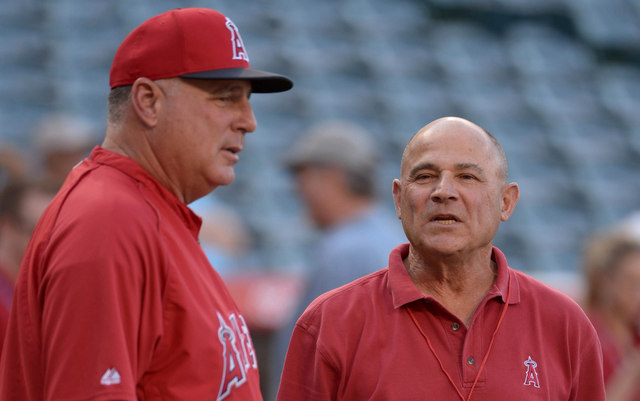TLM’s Zach Reynolds has Jamal Murray being drafted at No. 3 overall to the Boston Celtics in his latest mock. He is also fourth on Reynolds’ Big Board behind Ben Simmons, Brandon Ingram, and Kris Dunn.
The Ringer’s Bill Simmons seems to be on board with the idea of Murray landing in Boston.
[embedit snippet=”murray-bill-simmons”]
Well, sort of.
[embedit snippet=”chriss-simmons-murray”]
Meanwhile, many respectable folks feel Dragan Bender is the third-best prospect in the 2016 NBA Draft. This column will provide no concrete answer as to which of those crowds is correct, but it will delve into Murray—using a November win versus Duke that someone kindly posted on YouTube as a model.
Mind you, Kentucky won the game 74-63 while holding Brandon Ingram and Grayson Allen to a combined 10 points (after they averaged 45 in the first two games of the season). Coach K benched Ingram for much of the second half, and he totaled four points, four turnovers, four fouls, one rebound, one assist, and one block in 19 minutes. Meanwhile, Allen was abysmal, and he was subsequently stifled by the smaller, faster, and feistier Tyler Ulis.
The first thing I noticed about Murray is that he is a very willing passer who is happy making the simple play. On the first possession of the game, he came off a screen, caught a pass at the three-point line on the wing, gave it back, then reran the same play, this time bursting by Ingram through the lane for a smooth deuce. Any time Murray was left open from beyond the arc, he made Duke pay. There’s no one doubting his ability to hit jumpers, and he possesses enough ball-handling abilities to share duties in that department.
This early-season game was a good exhibit of why front offices feel Murray could be an excellent offensive option. Personally, I see a small resemblance between Murray and former Hoosier Eric Gordon (pre-injuries), though I think Murray is more willing and eager to share the rock and Gordon was maybe a tad more athletic.
The main problem for Murray arises on defense. There’s no doubt a hard worker like Murray improved defensively as the season went on, but that is where he will have to make the most sizable leap if he hopes to survive at the next level. Furthermore, his weaknesses as a defender in the first week of college basketball likely foretell how his rookie season will go (i.e. he will probably struggle to manage defensively against the world’s best basketball teams).
Murray made many mistakes on defense in the first half. Twice he got beat closing out too hard on the perimeter, one resulting in a missed layup and the other a bail-out blocked shot from the help D. Murray fell asleep and left his man open for threes on other plays—off of missed free throws, when leaving his man to attempt a steal, getting caught on picks. He definitely needs to improve his ability to fight around screens since I don’t think he has the speed to keep up with NBA point guards on a full-time basis.
And therein lies the main issue with Murray. He’s a 6-3 or 6-4 guard with a 6-6 to 6-7 wingspan, which is undersized for the shooting guard position, Nevertheless, Murray will almost certainly match up against opposing twos defensively, and smart teams will find ways to force him into uncomfortable matchups.
In one play during the first half, Murray let Ingram move to the middle and didn’t bump the cutter, which made it easy for him to use a teammate’s screen. Ingram curled off that pick, then dished to his rolling big man who set the original screen on Murray. The play ended with a dunk, and it’s exactly the type of defensive meltdown that results in a quick benching at the NBA level.
On a positive note, the few times he was forced to switch onto a center down low, he fought hard for positioning and didn’t allow an easy basket. Murray definitely doesn’t lack effort defensively. Occasionally, he’ll look like he’s passively watching the action, but for the most part, he constantly has his head on a swivel, stays in a solid stance, and has pretty good instincts.
Murray finished the game with 16 points (7-17 FG, 2-3 3-Pt, 0-2 FT), five rebounds, five assists, three turnovers, and four steals. But I think he had a better passing game than the box score indicates, and he made some nice pocket bounce passes after drawing double-teams.
On the other end, Murray’s steals were mostly deflections caused by teammates where he was simply in the right place at the right time. Still, he did seem to have a good sense for those situations, and he was there to pounce on loose balls. One other cause for concern of mine is that he was also leaking out a lot instead of crashing the glass and boxing out. He also hunted for some unnecessary shots down the stretch of the game that sort of displayed his below-the-rim half-court limitations. Zach Mikash of Denver Stiffs used Randy Foye as a comparison for what Murray might be if he underwhelms as a lottery pick, which seems fairly reasonable.
The most useful players are effective in helping out on both sides of the ball. Precious few guys can play as little defense as James Harden and still have a positive impact. Harden also has a 6-11 wingspan, and he’s exceptionally strong. In order to be the best player from any draft, chances are you need to have Murray’s level of self-confidence. Dream it. Believe it. Do it. Repeat it. There are almost as many weaknesses as there are strengths when it comes to Murray, which makes it tough for me to bank on him becoming an NBA All-Star. However, with a stroke that sweet, I’ll surely be rooting for him.
Add The Sports Daily to your Google News Feed!
